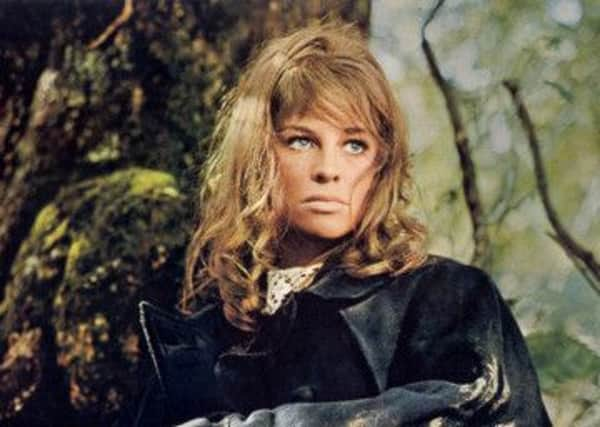Sixties star who chose to retreat from the spotlight


Julie Christie’s status as an icon of the cinema is assured thanks to a string of classic 60s films that began with Billy Liar and ended for all intents and purposes with Far from the Madding Crowd.
Both films and another, 1965’s Darling, for which Christie won the Academy Award as Best Actress, were directed by John Schlesinger. And it was Schlesinger who harnessed Christie’s undoubted appeal whilst managing her own doubts about the industry of which she was a part.
Advertisement
Hide AdAdvertisement
Hide AdBy the late 1970s it was pretty much over for Julie Christie. One of the greatest talents of the age faded happily into the background. And it was entirely her own decision. Yet for every success, such as Doctor Zhivago, there was a misfire. Among them was Far from the Madding Crowd with Christie, then 26, as the sun around which three very different men revolve.
The film was not well received on release. And Christie took much of the flak for being insufficiently sensual as Bathsheba Everdene. Yet it’s hard to take one’s eyes off her whenever she appears.
What’s more even the combined power of the male triumvirate of Terence Stamp, Alan Bates and Peter Finch can’t overshadow her.
Christie, now 74, recalls those far-off days as a time of terror. “I was so terrified,” she says. “My life was dominated by absolute terror and thinking I didn’t know what the hell I was doing. I can’t look at it rationally. I just did what I was told to do, basically.”
Advertisement
Hide AdAdvertisement
Hide AdWorld cinema has John Schlesinger to thank for bringing Christie to the screen. He cast Christie in Billy Liar as the free-spirited Liz. In doing so he gave British films a new heroine.
Schlesinger first glimpsed Christie when he was making his 1961 documentary, The Class, about students at the Central School of Dramatic Art, for the BBC’s arts magazine Monitor. “I hadn’t actually contemplated using Julie but I certainly saw her and her extraordinary looks just impinged on me.”
Christie did two tests but wasn’t hired. Instead the actress Topsy Jane was cast as Liz but later fell ill, prompting a frantic search for a replacement. Re-enter 21-year-old Julie Christie.
Christie represented something other than sex appeal. She represented freedom. Her strength in characters – from Liz in Billy Liar via Diana, the shallow and manipulative model in Darling, to Lara in Doctor Zhivago to headstrong Bathsheba in Thomas Hardy’s tale, a wealthy beauty desired by three suitors – made her unique amongst 1960s actresses.
Advertisement
Hide AdAdvertisement
Hide AdYet it was not Bathsheba who resonated with British males. The complexities of the period tale – and Christie’s perceived miscasting; the film has since been reconsidered – meant many avoided it. Thus Billy Liar remained their touchstone. She calls it “terribly important” and describes her qualities at the time as “quite new, quite fresh and very strong”, adding: “It made an impact on people’s minds which was very strong, pleasant and pleasing. The chaps who fancied me were more likely to have had pictures from Billy Liar than almost anything else I’d done.
“There was something about that woman that really excited them, and people confused that with me. Even now, people talk about that. Somehow that liberated woman’s personality got confused with my own and was a great bonus to me.”